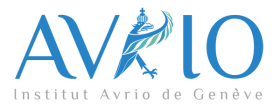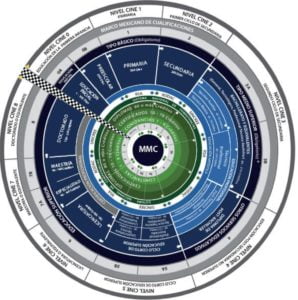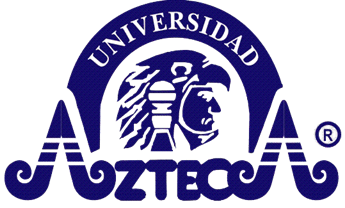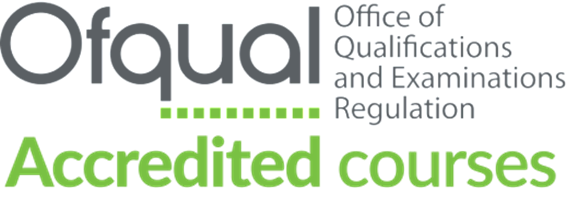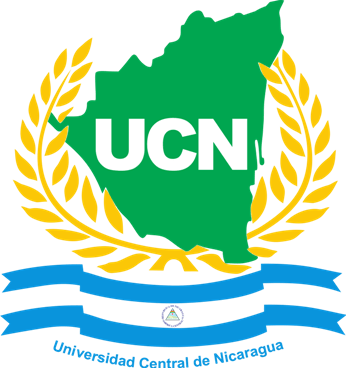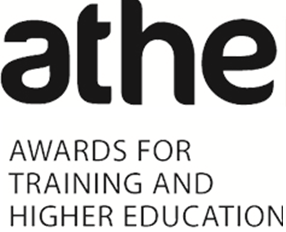What is the relationship between the EQF and the framework for the European Higher Education Area?
At the European level, the development of qualifications frameworks began with a qualifications framework for one education sector: The Framework for Qualifications of the European Higher Education Area (QF-EHEA) has been formed since 1999 (Bologna Declaration; the Dublin descriptors were adopted in 2005); whereas, the development of the EQF started in 2005. The two frameworks clearly have similarities and overlapping areas: both are meta-frameworks, cover a broad scope of learning and are designed to improve transparency with regard to qualifications within Europe. They are both associated with quality assurance and use the concept of ‘best fit’ to determine levels. Both also have clear aspirations to support lifelong learning and labour mobility.
Despite these obvious similarities between the two frameworks, differences can also be observed with regard to their aims and the descriptors used. The QF-EHEA intends to harmonise systems whereas the EQF intends to relate systems to each other:
One central objective of the Bologna process is to harmonise the European higher education systems by introducing common degree structures (three-cycles degree system).
The EQF, on the other hand, is not an instrument for harmonising qualifications or parts of qualifications systems but it is intended to function as a type of translation device to make relationships between qualifications and different systems clearer.
To link these two meta-frameworks, the EQF asserts compatibility with the QF-EHEA. A main reason for drawing the higher levels of the EQF directly on the EHEA descriptors is to avoid the development of two isolated frameworks. Thus, the learning outcomes of certain EQF levels correspond to the cycle descriptors of the QF-EHEA. There is a clear cross-referencing at levels 5 to 8. Thus, the QFEHEA’s respective cycle descriptors – developed by the Joint Quality Initiative, as part of the Bologna process – are understood to be compatible with the descriptors for levels 5 to 8 of the EQF. Although different descriptors are used, both frameworks have a common view of the dimensions of progression regarding knowledge, skills (application) and professional conduct.
However, since the EQF is an overarching framework and seeks to include different forms of learning (not only learning in higher education but also more professional oriented qualifications), the descriptors are broader, more generic and have to be more encompassing than the Dublin descriptors applied to define the levels for the QF-EHEA. This means that the levels can be seen as equivalent, although the level descriptors are not the same. Consequently, EQF levels 5 to 8 can be compatible not only with qualification degrees acquired in formal way by studying in a higher education institution, but also with vocational qualifications awarded through formal, non-formal or informal learning.
In the QF-EHEA, learning outcomes are understood as descriptions of what a learner is expected to know, to understand and to do at the end of the respective cycle.
The Dublin descriptors refer to the following five dimensions: ‘knowledge and understanding’, ‘applying knowledge and understanding’, ‘making judgements’, ‘communication’ and ‘learning skills’. Whereas the first three dimensions are mainly covered by the knowledge and skills dimensions in the EQF, the EQF does not explicitly refer to key competences such as communication, or metacompetences, such as learning to learn. These are partly included in an inherent manner in all the columns, but can mainly be assumed in the competence column.
Although the descriptors defining levels in the EQF and the Dublin descriptors differ, the EQF level descriptors fully integrate the Bologna descriptors and are thus compatible to these.
RECOMMENDATION OF THE EUROPEAN PARLIAMENT AND OF THE COUNCIL
of 18 June 2009
on the establishment of a European Credit System for Vocational Education and Training (ECVET)
(Text with EEA relevance)
EN C 155/14 Official Journal of the European Union 8.7.2009
DEFINITIONS
For the purposes of this recommendation, the following definitions shall apply:
(a) ‘Qualification’ means a formal outcome of an assessment and validation process which is obtained when a competent institution determines that an individual has achieved learning outcomes to given standards;
(b) ‘Learning outcomes’ means statements of what a learner knows, understands and is able to do on completion of a learning process and which are defined in terms of knowledge, skills and competence;
(c) ‘Unit of learning outcomes’ (unit) means a component of a qualification, consisting of a coherent set of knowledge, skills and competence, that can be assessed and validated;
(d) ‘Credit for learning outcomes’ (credit) means a set of learning outcomes of an individual which have been assessed and which can be accumulated towards a qualification or transferred to other learning programmes or qualifications;
(e) ‘Competent institution’ means an institution which is responsible for designing and awarding qualifications or recognising units or other functions linked to ECVET, such as allocation of ECVET points to qualifications and units, assessment, validation and recognition of learning outcomes, under the rules and practices of participating countries;
(f) ‘Assessment of learning outcomes’ means methods and processes used to establish the extent to which a learner has in fact attained particular knowledge, skills and competence;
(g) ‘Validation of learning outcomes’ means the process of confirming that certain assessed learning outcomes achieved by a learner correspond to specific outcomes which may be required for a unit or a qualification;
(h) ‘Recognition of learning outcomes’ means the process of attesting officially achieved learning outcomes through the awarding of units or qualifications;
(i) ‘ECVET points’ means a numerical representation of the overall weight of learning outcomes in a qualification and of the relative weight of units in relation to the qualification.
1. ECVET — PRINCIPLES AND TECHNICAL SPECIFICATIONS
ECVET is a technical framework for the transfer, recognition and, where appropriate, accumulation of individuals’ learning outcomes with a view to achieving a qualification. ECVET tools and methodology comprise the description of qualifications in terms of units of learning outcomes with associated points, a transfer and accumulation process and complementary documents such as learning agreements, transcripts of records and ECVET users’ guides. ECVET is intended to facilitate the recognition of learning outcomes in accordance with national legislation, in the framework of mobility, for the purpose of achieving a qualification. It should be noted that ECVET does not imply any new entitlement for citizens to obtain the automatic recognition of either learning outcomes or points. Its application for a given qualification is in accordance with the legislation, rules and regulations applicable in the Member States and is based on the following principles and technical specifications: 1. Units of learning outcomes A unit is a component of a qualification, consisting of a coherent set of knowledge, skills and competence that can be assessed and validated with a number of associated ECVET points. A qualification comprises in principle several units and is made up of the whole set of units. Thus, a learner can achieve a qualification by accumulating the required units, achieved in different countries and different contexts (formal and, where appropriate, non-formal and informal), while respecting national legislation relating to the accumulation of units and the recognition of learning outcomes.
2. Transfer and Accumulation of learning outcomes, ECVET partnerships
In ECVET, units of learning outcomes achieved in one setting are assessed and then, after successful assessment, transferred to another setting. In this second context, they are validated and recognised by the competent institution as part of the requirements for the qualification that the person is aiming to achieve. Units of learning outcomes can then be accumulated towards this qualification, in accordance with national or regional rules. Procedures and guidelines for the assessment, validation, accumulation and recognition of units of learning outcomes are designed by the relevant competent institutions and partners involved in the training process. Credit transfer based on ECVET and applied to learning outcomes achieved in formal learning contexts should be facilitated by establishing partnerships and networks involving competent institutions, each of which is empowered, in their own setting, to award qualifications or units or to give credit for achieved learning outcomes for transfer and validation.
3. Learning agreement and personal transcript
For applying credit transfer involving two partners and a specific mobile learner, a learning agreement is concluded by the two competent institutions involved in the training and validation
process and the learner, in the framework of an MoU.
4. ECVET points
ECVET points provide complementary information about qualifications and units in numerical form. They have no value independent of the acquired learning outcomes for the particular qualification to which they refer and they reflect the achievement and accumulation of units. To enable a common approach for the use of ECVET points, a convention is used according to which 60 points are allocated to the learning outcomes expected to be achieved in a year of formal full time VET.
In ECVET the allocation of points usually has two phases: ECVET points are allocated first to a qualification as a whole and then to its units. For a given qualification, one formal learning context is taken as a reference and, on the basis of the convention the total number of points is assigned for that qualification. From this total, ECVET points are then allocated to each unit according to their relative weight within the qualification.
For qualifications which do not have a formal learning pathway reference, ECVET credit points can be allocated through estimation by comparison with another qualification which has a formal reference context. To establish the comparability of the qualifications, the competent institution should refer to the equivalent EQF level or, possibly, NQF level, or to the similarity of the learning outcomes in a closely related professional field.
The successful achievement of a qualification or of a unit triggers the award of the associated ECVET points, independently of the actual time required to achieve them. Usually the transfer of a unit entails the transfer of the corresponding ECVET points so that they are included when the transferred learning outcomes are recognised, in accordance with national or regional rules. It is up to the competent institution to reconsider, where necessary, the ECVET points to be taken into account, as long as the rules and methodologies which are laid down for this purpose are transparent and underpinned by quality assurance principles. Any qualification acquired through non-formal or informal learning for which a formal learning pathway reference can be identified, and the corresponding units, carry the same ECVET points as the reference, since the same learning outcomes are being achieved.
ECTS and the European Higher Education Area (Bologna Process)
ECTS is the credit system for higher education used in the European Higher Education Area, involving all countries engaged in the Bologna Process. ECTS is one of the cornerstones of the Bologna process by the establishment of a system of credits as a proper means of promoting the most widespread student mobility. ECTS contributes to other Bologna objectives: ECTS credits are a key element of the Bologna Framework for Qualifications, compatible with the European Qualifications Framework for lifelong learning (EQF). According to the Bologna Qualifications Framework ECTS credits are used in formulating national qualifications frameworks for higher education, which may contain more detailed national credit arrangements. ECTS is also increasingly used by institutions in other continents and thus plays a role in the growing global dimension of the Bologna Process.
The European Qualifications Framework for lifelong learning (EQF)
The EQF is a common European reference framework which links countries’ qualifications systems together, acting as a translation device to make qualifications more readable and understandable across different countries and systems in Europe. It has two principal aims: to promote citizens’ mobility between countries and to facilitate their lifelong learning.
The Recommendation formally entered into force in April 2008. It sets 2010 as the recommended target date for countries to relate their national qualifications systems to the EQF, and 2012 for countries to ensure that individual qualification certificates bear a reference to the appropriate EQF level.
The EQF will relate different countries’ national qualifications systems and frameworks together around a common European reference – its eight reference levels. The levels span the full scale of qualifications, from basic (Level 1, for example school leaving certificates) to advanced (Level 8, for example Doctorates) levels. As an instrument for the promotion of lifelong learning, the EQF encompasses all levels of qualifications acquired in general, vocational as well as academic education and training. Additionally, the framework addresses qualifications acquired in initial and continuing education and training.
The eight reference levels are described in terms of learning outcomes. The EQF recognises that Europe’s education and training systems are so diverse that a shift to learning outcomes is necessary to make comparison and cooperation between countries and institutions possible.
In the EQF a learning outcome is defined as a statement of what a learner knows, understands and is able to do on completion of a learning process. The EQF therefore emphasises the results of learning rather than focusing on inputs such as length of study. Learning outcomes are specified in three categories – as knowledge, skills and competence. This signals that qualifications – in different combinations – capture a broad scope of learning outcomes, including theoretical knowledge, practical and technical skills, and social competences where the ability to work with others will be crucial.
RECOMMENDATION OF THE EUROPEAN PARLIAMENT AND OF THE COUNCIL
of 23 April 2008
on the establishment of the European Qualifications Framework for lifelong learning
HEREBY RECOMMEND THAT MEMBER STATES:
1. use the European Qualifications Framework as a reference tool to compare the qualification levels of the different qualifications systems and to promote both lifelong learning and equal opportunities in the knowledge-based society, as well as the further integration of the European labour market, while respecting the rich diversity of national education systems;
2. relate their national qualifications systems to the European Qualifications Framework by 2010, in particular by referencing, in a transparent manner, their qualification levels to the levels set out in Annex II, and, where appropriate, by developing national qualifications frameworks in accordance with national legislation and practice;
3. adopt measures, as appropriate, so that, by 2012, all new qualification certificates, diplomas and “Europass” documents issued by the competent authorities contain a clear reference, by way of national qualifications systems, to the appropriate European Qualifications Framework level;
4. use an approach based on learning outcomes when defining and describing qualifications, and promote the validation of non-formal and informal learning in accordance with the common European principles agreed in the Council conclusions of 28 May 2004, paying particular attention to those citizens most likely to be subject to unemployment or insecure forms of employment, for whom such an approach could help increase participation in lifelong learning and access to the labour market;
5. promote and apply the principles of quality assurance in education and training set out in Annex III when relating higher education and vocational education and training qualifications within national qualifications systems to the European Qualifications Framework; (…)
Definitions
For the purposes of the Recommendation, the definitions which apply are the following:
(…)
(g) “knowledge” means the outcome of the assimilation of information through learning. Knowledge is the body of facts, principles, theories and practices that is related to a field of work or study. In the context of the European Qualifications Framework, knowledge is described as theoretical and/or factual;
(h) “skills” means the ability to apply knowledge and use know-how to complete tasks and solve problems. In the context of the European Qualifications Framework, skills are described as cognitive (involving the use of logical, intuitive and creative thinking) or practical (involving manual dexterity and the use of methods, materials, tools and instruments);
(i) “competence” means the proven ability to use knowledge, skills and personal, social and/or methodological abilities, in work or study situations and in professional and personal development. In the context of the European Qualifications Framework, competence is described in terms of responsibility and autonomy.
EQF Level 8
The learning outcomes relevant to Level 8 are
• knowledge at the most advanced frontier of a field of work or study and at the interface between fields.
Qualification
Examination Criteria (Dublin Descriptors):
Qualifications that signify completion of the third cycle are awarded to students who:
have demonstrated a systematic understanding of a field of study and mastery of the skills and methods of research associated with that field;
have demonstrated the ability to conceive, design, implement and adapt a substantial process of research with scholarly integrity;
have made a contribution through original research that extends the frontier of knowledge by developing a substantial body of work, some of which merits national or international refereed publication;
are capable of critical analysis, evaluation and synthesis of new and complex ideas;
can communicate with their peers, the larger scholarly community and with society in general about their areas of expertise;
can be expected to be able to promote, within academic and professional contexts, technological, social or cultural advancement in a knowledge based society;
Terms:
The word ‘professional’ is used in the descriptors in its broadest sense, relating to those attributes relevant to undertaking work or a vocation and that involves the application of some aspects of advanced learning. It is not used with regard to those specific requirements relating to regulated professions. The latter may be identified with the profile / specification.
The word ‘competence’ is used in the descriptors in its broadest sense, allowing for gradation of abilities or skills. It is not used in the narrower sense identified solely on the basis of a ‘yes/no’ assessment.
The word ‘research’ is used to cover a wide variety of activities, with the context often related to a field of study; the term is used here to represent a careful study or investigation based on a systematic understanding and critical awareness of knowledge. The word is used in an inclusive way to accommodate the range of activities that support original and innovative work in the whole range of academic, professional and technological fields, including the humanities, and traditional, performing, and other creative arts. It is not used in any limited or restricted sense, or relating solely to a traditional ‘scientific method’.
Third Cycle Qualifications
| Cycle | Knowledge and understanding: |
| 3 (Doctorate) | [includes] a systematic understanding of their field of study and mastery of the methods of research* associated with that field.. |
| Applying knowledge and understanding: | |
| 3 (Doctorate) | [is demonstrated by the] ability to conceive, design, implement and adapt a substantial process of research* with scholarly integrity .. [is in the context of] a contribution that extends the frontier of knowledge by developing a substantial body of work some of which merits national or international refereed publication .. |
| Making judgements: | |
| 3 (Doctorate) | [requires being] capable of critical analysis, evaluation and synthesis of new and complex ideas.. |
| Communication | |
| 3 (Doctorate) | with their peers, the larger scholarly community and with society in general (dialogue) about their areas of expertise (broad scope).. |
| Learning skills .. | |
| 3 (Doctorate) | expected to be able to promote, within academic and professional contexts, technological, social or cultural advancement .. |
